Related Research Articles

Walter Adolph Georg Gropius was a German-American architect and founder of the Bauhaus School, who, along with Alvar Aalto, Ludwig Mies van der Rohe, Le Corbusier and Frank Lloyd Wright, is widely regarded as one of the pioneering masters of modernist architecture. He is a founder of Bauhaus in Weimar (1919). Gropius was also a leading architect of the International Style.

The Carpenter Center for the Visual Arts at Harvard University, in Cambridge, Massachusetts is the only building designed primarily by Le Corbusier in the United States—he contributed to the design of the United Nations Secretariat Building—and one of only two in the Americas. Le Corbusier designed it with the collaboration of Chilean architect Guillermo Jullian de la Fuente at his 35 rue de Sèvres studio; the on-site preparation of the construction plans was handled by the office of Josep Lluís Sert, then dean of the Harvard Graduate School of Design. He had formerly worked in Le Corbusier's atelier and had been instrumental in winning him the commission. The building was completed in 1962.

Benjamin C. Thompson was an American architect. He was one of eight architects who founded The Architects Collaborative (TAC) in 1945 in Cambridge, Massachusetts, one of the most notable firms in post-war modernism, and then started his own firm, Benjamin Thompson and Associates (BTA), in 1967.

Robert Arthur Morton Stern, is a New York City–based architect, educator, and author. He is the founding partner of the architecture firm, Robert A. M. Stern Architects, also known as RAMSA. From 1998 to 2016, he was the Dean of the Yale School of Architecture.

Werner Seligmann was an architect, urban designer and educator.
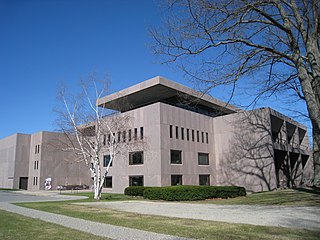
The Architects Collaborative (TAC) was an American architectural firm formed by eight architects that operated between 1945 and 1995 in Cambridge, Massachusetts. The founding members were Norman C. Fletcher (1917–2007), Jean B. Fletcher (1915–1965), John C. Harkness (1916–2016), Sarah P. Harkness (1914–2013), Robert S. McMillan (1916–2001), Louis A. McMillen (1916–1998), Benjamin C. Thompson (1918–2002), and Walter Gropius (1883–1969). TAC created many successful projects, and was well respected for its broad range of designs, being considered one of the most notable firms in post-war modernism.
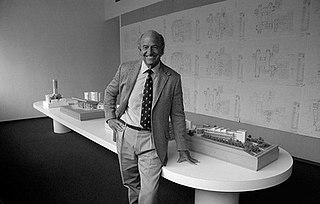
Charles Gwathmey was an American architect. He was a principal at Gwathmey Siegel & Associates Architects, as well as one of the five architects identified as The New York Five in 1969. Gwathmey was perhaps best known for the 1992 renovation of Frank Lloyd Wright's Guggenheim Museum in New York City.

Jeffrey Kipnis is an American architectural critic, theorist, designer, film-maker, curator, and educator.
Weiss/Manfredi is a multidisciplinary New York City-based design practice that combines landscape, architecture, infrastructure, and art. The firm's notable projects include the Seattle Art Museum's Olympic Sculpture Park, the Brooklyn Botanic Garden Visitor Center, the Tata Innovation Center at Cornell Tech, the Singh Center for Nanotechnology at the University of Pennsylvania, the Museum of the Earth, the Embassy of the United States, New Delhi, and Hunter's Point South Waterfront Park.

Edward Larrabee Barnes was an American architect. His work was characterized by the "fusing [of] Modernism with vernacular architecture and understated design." Barnes was best known for his adherence to strict geometry, simple monolithic shapes and attention to material detail. Among his best-known projects are the Haystack School, Christian Theological Seminary, Dallas Museum of Art, the Walker Art Center, 599 Lexington Avenue, the Thurgood Marshall Federal Judiciary Building, and the IBM Building at 590 Madison Avenue.

Keller Easterling is an American architect, urbanist, writer, and professor. She is Enid Storm Dwyer Professor and Director of the MED Program at Yale University.

Cooper Robertson is an international architecture and urban design firm, headquartered in New York City. It was founded in 1979 by Alex Cooper and Jaquelin T. Robertson.
Elizabeth Whittaker is an American architect, designer and educator based in Boston, Massachusetts. She is the founder of Merge Architects in Boston and Associate Professor in Practice of Architecture at the Graduate School of Design at Harvard University.
Mark Alan Hewitt is an American architect, preservationist and architectural historian, known for his work on architectural history and the history of architectural drawing "as a medium of thought."
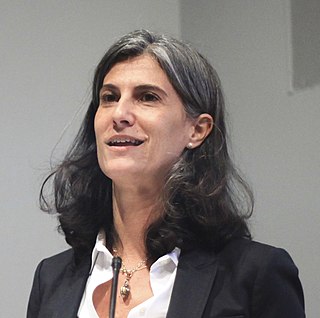
Galia Solomonoff AIA is an Argentinian-born architect and the founding creative director of New York-based architecture and design firm Solomonoff Architecture Studio. Her notable projects include Dia:Beacon; the Defective Brick Project; multiple residential projects in Manhattan and Brooklyn; and competition proposals for international institutional projects.
Bartholomew Voorsanger is an American architect based in New York.
Mario Gooden is an architect in the United States. He is the director at Mario Gooden Studio based in New York, New York. He was previously the principal of Huff + Gooden Architects which he co-founded with Ray Huff in 1997. Gooden is also a Professor of Practice and Director of the Master of Architecture program at the Graduate School of Architecture, Planning and Preservation (GSAPP) of Columbia University, where he teaches architectural design and theory. Gooden held previous academic appointments at the Yale School of Architecture as the Louis I. Khan Distinguished Visiting Professor, the Southern California Institute of Architecture (Sci-Arc) in Los Angeles, the University of Arizona (Tucson), the University of Florida (Gainesville), Clemson University, and The City College of New York.
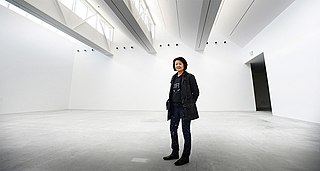
Toshiko Mori is a Japanese architect and the founder and principal of New York-based Toshiko Mori Architect, PLLC and Vision Arc. She is also the Robert P. Hubbard Professor in the Practice of Architecture at the Harvard University Graduate School of Design. In 1995, she became the first female faculty member to receive tenure at the GSD.
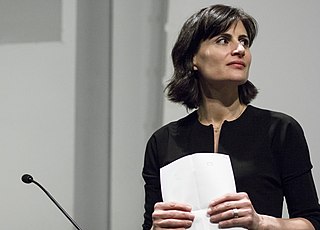
Amale Andraos is a New York-based designer. She was dean of the Columbia Graduate School of Architecture, Planning and Preservation (2014-2021) and serves as advisor to the Columbia Climate School. She is the co-founder of the New York City architecture firm WORKac with her husband, Dan Wood. Her impact on architectural practice around the world was recognized when she was named Honorary Fellow of the Royal Architectural Institute of Canada in 2021.
Gordon Kipping is the founder and principal of G TECTS, a New York-based architectural firm. Kipping has taught at the Graduate School of Design at Harvard University and has assisted Frank Gehry in teaching design studios at the School of Architecture at Yale University. Kipping has been a studio professor at the School of Architecture at Columbia University, since 2000.
References
- ↑ "Home". faneuilhallmarketplace.com.
- ↑ "TAC - Great Buildings Online".
- ↑ "Answers - the Most Trusted Place for Answering Life's Questions". Answers.com .
- ↑ "Perspecta | YSOA | Yale School of Architecture". Archived from the original on May 15, 2012. Retrieved August 17, 2012.
- ↑ Kampel, Stewart (21 November 1993). "From Blueprint to Imprint: Winners of Architectural Awards". The New York Times.